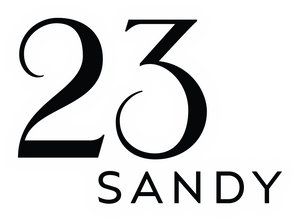| Title | Fibre Libre |
| Artist / Creator | Bridget Elmer |
| Press Name | Flatbed Splendor |
| Place of Publication | Tallahasse, FL |
| Publication Date | 2010 |
| Process / Technique | Letterpress |
| Structure / Binding | The book is a hybrid form, combining three volumes of Hedi Kyle's non-adhesive accordion structure with the pamphlet stitch. The three volumes are attached by removable spines |
| Medium / Materials | The plates were printed on a Vandercook Universal I letterpress at Florida State University's Small Craft Advisory Press. The prints and handmade paper were then bound by hand into an artist's book and include a total of 60 letterpress printed pages, 16 colors of ink, and 13 versions of collaboratively handmade paper. |
| Paper Stock | Collaboratively handmade paper |
| Number of Pages | 60 |
| Dimensions (WxHxD) | 5.75 x 5.75 x 1.5 closed; 5.75 x 11.5 x .75 (variable when spines are detached) |
| Edition Size | Open Edition of 50 |
| Box / Wrapper | Housed in an archival folding box with velcro closure. |
| Signed & Numbered | Yes |
Fibre Libre is an artists book that tells the story of a group of people learning about free software while learning to make paper. It is the first manifestation of the Open Edition Project. Fibre Libre began as an event, which took place at Asheville Book Works in the summer of 2009. At the event, a variable edition of paper was handmade by a community of participants. The paper was made from natural fibers, pulped from the clothing of community members.
After the event, the fiber content of the paper was quantified and imported into a computer program written in Processing, an open source programming language. Using several simple commands, the program draws a series of Bezier curves, based on the fiber content of each sheet of handmade paper. Each curve represents one of the Fibre Libre participants.
The resulting images and their code were then made into photopolymer printing plates. The files for the plates were digitally prepared using Processing and Scribus, an open source desktop publishing program, and output as Press Quality PDFs. The PDFs were made into high density negatives by a local service bureau, which were then used to produce photopolymer plates.
The plates were printed on a Vandercook Universal letterpress at Florida State University’s Small Craft Advisory Press. The prints and handmade paper were then bound by hand into an artist’s book, in an edition of 50 handmade copies.
The story is told in two ways, with the paper forming one narrative and a series of images forming the second. Just like the papermaking event, this book serves as an invitation to learn. Behind the paper sheets (object) are printed instructions (source) for how it was made. Behind the images (object) are printed the codes (source) from which they were generated. In this way, Fibre Libre serves as an exploration of free software and how its architecture can be enacted and understood through the book form.
Artist Bio
Bridget Elmer is headquartered in Tallahassee, FL, where she is rebuilding her platen press, tuning up her 1966 flatbed truck, and retrofitting open source philosophy to book technologies. Bridget has studied book binding, letterpress printing, and printmaking at the Cooper Union, Center for Book Arts, Penland School of Crafts, and Asheville BookWorks. She will graduate in the spring of 2010 with her MFA in the Book Arts from the University of Alabama. Bridget is currently the Resident Artist at the Small Craft Advisory Press at Florida State University, where she is in the process of completing her creative thesis project and teaching undergraduate courses in Book Structures. In addition to her on-going work as Flatbed Splendor, Bridget recently co-founded a new project with Emily Larned, a.k.a. Red Charming. Impractical Labor in Service of the Speculative Arts (ILSSA) is an organization for those who make experimental or conceptual work with obsolete technology.


